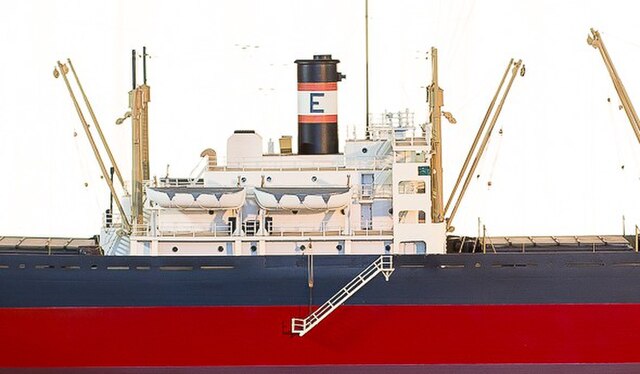Haskell-class attack transport
Haskell-class attack transports (APA) were amphibious assault ships of the United States Navy created in 1944. They were designed to transport 1,500 troops and their combat equipment, and land them on hostile shores with the ships' integral landing craft.
USS Noble, a ship of the Haskell class, in 1956
USS St. Mary's in San Francisco Bay, California, in late 1945 or early 1946. She is returning troops from the western Pacific to the United States as part of Operation Magic Carpet. Note the long homeward bound pennant trailing from her after mast, and the sign on shore (in the right distance) stating "Welcome Home, Well Done."
USS Rutland lowering an LCM off Iwo Jima in 1945
The Victory ship was a class of cargo ship produced in large numbers by American shipyards during World War II to replace losses caused by German submarines. They were a more modern design compared to the earlier Liberty ship, were slightly larger and had more powerful steam turbine engines, giving higher speed to allow participation in high-speed convoys and make them more difficult targets for German U-boats. A total of 531 Victory ships were built in between 1944 and 1946.
SS Red Oak Victory, now a museum ship
Victory cargo ships are lined up at California Shipbuilding Corporation in Los Angeles, California.
Model of a Victory ship's superstructure and center cranes. The engine room is located below the superstructure. This model is on display at the American Merchant Marine Museum in Kings Point, New York.
War Shipping Administration photo showing early 1944 Victory ship construction at California Shipbuilding Corporation with a May 1945 war tonnage production chart







